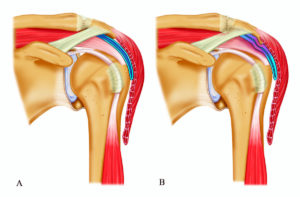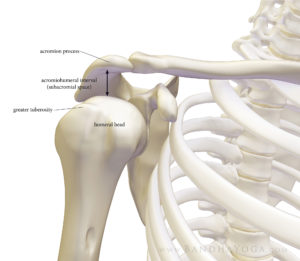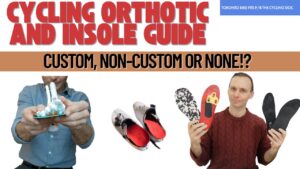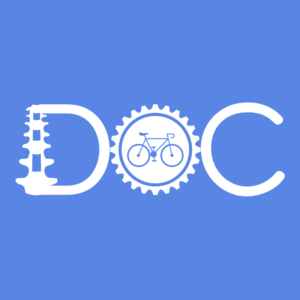Whether you are 18 or 65, shoulder pain is equally likely to have affected you. If it has not, let us keep it that way!

Most young people first experience shoulder pain with activity and exercise. It is usually felt with weight lifting overhead or with upper-body workouts such as the bench press or dumb bell curls.
For those closer to middle-age the same is true but with more cases of shoulder problems that occur without any obvious physical cause. It is very common for a middle-aged man or women to have an insidious case of shoulder pain that began with the simplest of household movements or upon waking up.
The most common types of shoulder pain that I see as a chiropractor is shoulder impingement and/or rotator cuff issues. Neither of these is a diagnose but rather reflect the pathological problem that is the cause of the pain.

Shoulder impingement occurs when one of the many tissues that pass between the acromion of the shoulder blade and humeral head of the arm bone becomes painful and injured from repetitive compression between these structures. There are tendons, muscle, ligaments, joint tissues are bursa that can become impinged and painful.
With respect to rotator cuff injuries, they are a far more complicated topic of conversation and an in-depth discussion is outside of the scope of this article. What is important to understand is:
- Rotator cuff muscles attach to the humeral head (arm bone) via tendons
- The rotator cuff tendons can develop small-to-large tears that may be partial or in severe cases full-thickness
- These tendons can “degenerate” and become tendinopathies: the tissues become weakened and prone to microscopic tearing
- Rotator cuff tears and tendinopathies are not always painful
- Pain in the shoulder is not always a rotator cuff tendon problem
- A painful rotator cuff tear if unlikely to “heal” and become “untorn” with rest and treatment but still can see full symptomatic relief
- Manual and orthopaedic testing of the shoulder is REALLY BAD at identifying the specific tendon, muscle, ligament or tissue causing your shoulder pain
- A tendinopathy or tear visualized on MRI or ultrasound may not be the source of one’s shoulder pain
- The same is true of disc injuries visualized with advanced imaging and low back pain
I want to take a second to recap the bolded point above: when I or any other doctor examine your shoulder, it is VERY DIFFICULT to be 95% confident in diagnosing the specific cause of your shoulder pain. On the other hand, it is relatively easy to identify if it is a rotator cuff or shoulder impingement syndrome with simple tests that can be performed by an expert therapist.
In this fantastic study, researchers question whether shoulder pain should be diagnosed as unspecific and generalized “mechanical shoulder pain” to reflect the difficulty in identifying the actual pain-causing-structure.
The point perfectly reflects my assertion that for most cases of shoulder pain outside of athletic populations, the name and diagnosis given to the problem are far less important than the actual core problem that contributed to the shoulder problem in the first place!
Unless a shoulder is injured in an acute traumatic accident like a skiing crash or bike fall, the rotator cuff is only 1 fo 4 factors that can contribute to shoulder pain.
When we assess a potential new practice member for shoulder issues with our comprehensive NeuroStructural Examination, we look at and beyond the rotator cuff to the spine, shoulder blade and nervous system: these are the other three contributing factors to most shoulder problems!
Sometimes, albeit rarely, a shoulder pain is just a shoulder joint problem. In most cases though, we tend to find:
- A structural distortion and rounding of the thoracic spine (mid back) that causes a forward tilt of the shoulder blade
- An Anterior Spinal Shift of the neck contribute to the tightness of some shoulder blade muscles
- Irritation and increased sensitivity of the neck nerves that provide sensation to the shoulder joint and power on the muscles of the shoulder
- Reduced movement of the shoulder blade placing additional movement strain on the shoulder joint
All four of these factors are empirically known to contribute to shoulder dysfunction and increase the likelihood of repetitive strain and injury of the shoulder joint tissues. When any one of these factors is present, it is safe to conclude that one’s shoulder pain is not just a shoulder problem.
“Rehabbing” the rotator cuff muscles is important and some fantastic drills are included in the video below, but strengthening and improving the function of the rotator cuff without addressing the Core Problem in the spine and nervous system that is contributing to the shoulder pain in the first place, is only a half measure. Our, and I hope your goal, is to not just help relieve pain and suffering but to correct the actual cause of your problem.
If you are looking to begin to correct some of the underlying Core Problems with your spine that contribute to your shoulder pain, I highly recommend that you start with our MOVE Curriculum – it is FREE. It will take you from the basics of activating, controlling and strengthening your spine to the necessary steps to reach your fullest physical potential.
If this and other rehab efforts don’t work for you, it is okay to ask for help.
– Dr Alex




